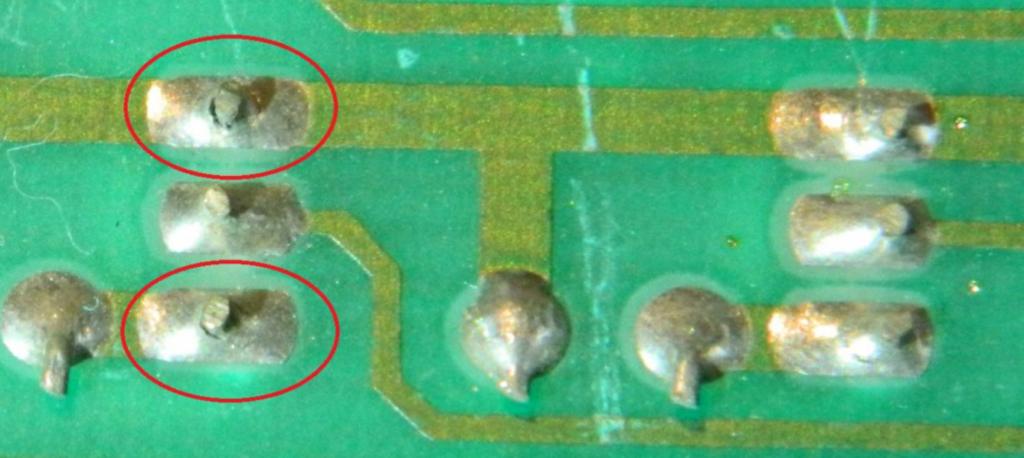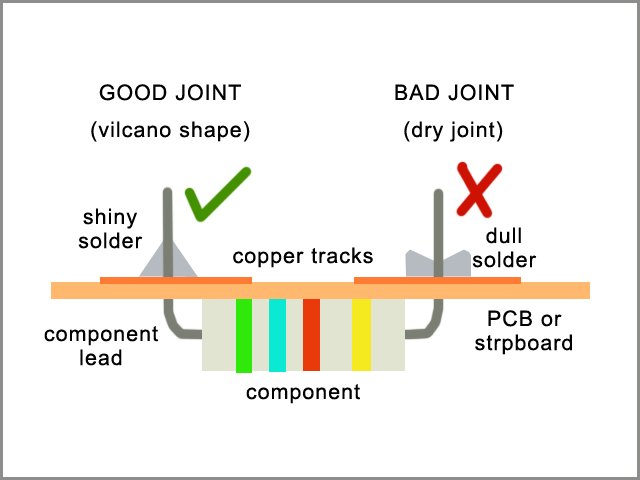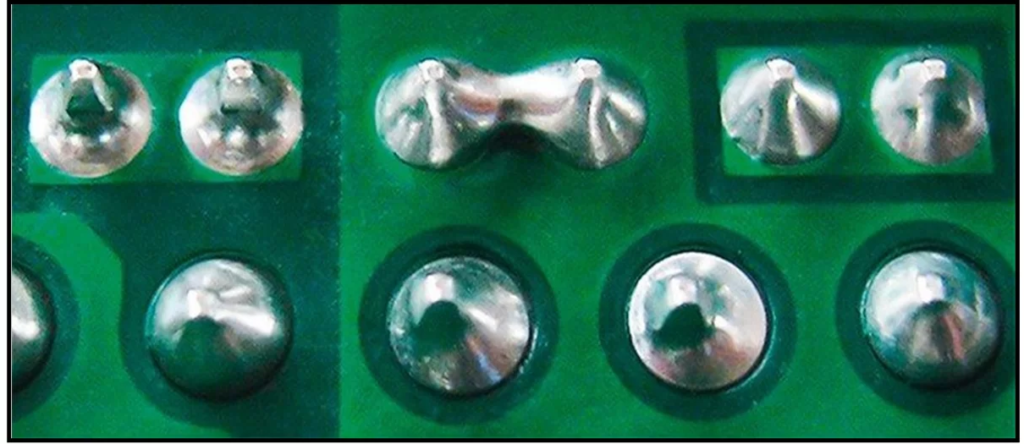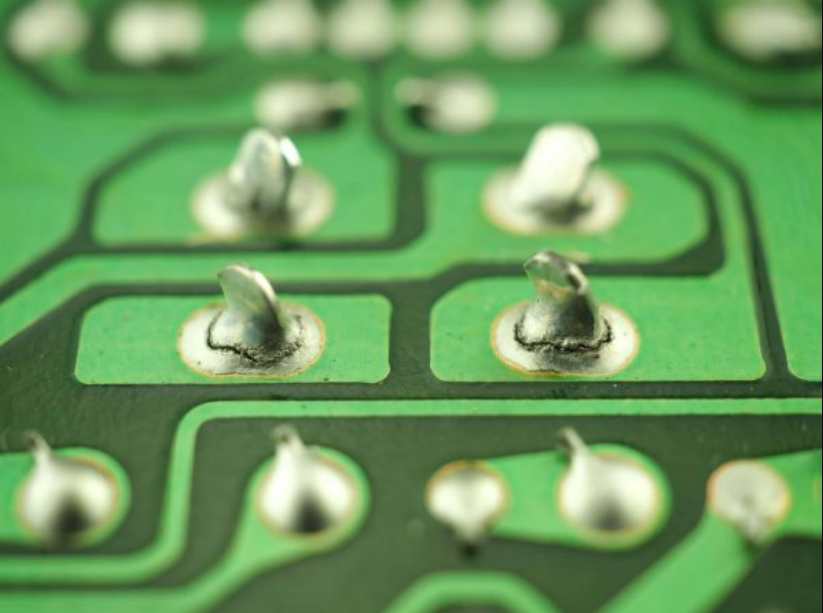
Support Team
Feedback:
support@nextpcb.comIt's essential to ensure that solder joints are made correctly in any electronics construction. Poor and dry solder joints cause equipment not to work once. Or there is a possibility that the solder joint could fail. Or it introduces noise into the electronic circuit.
While the complete failure of a joint immediately has been made is bad enough, a latent or intermittent failure can be worse as it will cause the equipment to fail once it is in service.
To better understand industry-approved methods for reliable soldering, readers can refer to IPC-J-STD-001 & IPC-A-610 Standard, the globally recognized standard for soldered electrical and electronic assemblies.
This article provides readers with detailed information about dry solder joints, their effects, and their preventive measures.
In this article,

A dry solder joint is a soldering defect that occurs when the solder does not properly wet or adhere to the component leads and PCB pads. It results in a weak and unreliable electrical connection. Factors such as insufficient heat, oxidized surfaces, improper soldering, or using low-quality solder cause dry joints.
It is essential to make proper solder joints in any electronic assembly. Poor solder joints can lead to immediate equipment failure or, even worse, issues or noise within the electronic circuit. Direct loss is undesirable, but latent shortcomings can be more problematic. As they cause equipment malfunctions while in use.

Some common ways to identify a dry solder joint include:
Visual inspection: A dry solder joint usually has a dull, grainy, or rough appearance, unlike a shiny and smooth finish for a good solder joint. Additionally, the solder may only partially cover the pad. It flows seamlessly around the component lead.
Cracks or fractures: Over time, dry solder joints can develop cracks or fractures due to mechanical stress or thermal cycling. These cracks may be visible to the naked eye or under a magnifying lens or microscope.
Inconsistent performance: Dry solder joints can lead to the irregular implementation of the electronic device. As the electrical connection may need to be fixed. This can manifest as sudden malfunctions, glitches, or complete loss of functionality.
Physical movement: A dry solder joint may allow the component lead or wire to move slightly. This happens when it is touched or manipulated, indicating a weak mechanical connection.
Dry solder joints can cause unstable or intermittent electrical connections. It leads to sudden malfunctions in electronic devices. The weak electrical connections formed by dry solder joints compromise the device's reliability. This can result in premature failure or a higher likelihood of issues arising during the device's lifetime.
Besides, the dry solder joints can have higher resistance than properly wetted ones. It can lead to increased power dissipation, localized heating, and reduced efficiency. The increased resistance and poor electrical connections can lead to signal degradation, and noise in high-speed applications.
Furthermore, dry solder joints are more susceptible to mechanical stress. It can break under physical pressure or thermal cycling. And leads to a complete loss of connectivity. In some cases, dry solder joints can create unintended connections between adjacent pads or traces. It occurs due to solder bridges, causing short circuits and damage to the electronic components or the PCB.

Dry solder joints can degrade the working performance of PCB. Some of the common causes of dry solder joint are as follow:
Insufficient heat: Applying preliminary heat during soldering can prevent the solder from properly melting and flowing around the component leads and PCB pads. This can lead to a weak bond and a dry solder joint.
Oxidized surfaces: Contaminated or oxidized surfaces on the component lead or PCB can hinder proper solder wetting and adhesion. It is essential to clean the surfaces before soldering to ensure a strong bond.
Improper soldering technique: Inexperienced soldering techniques can lead to dry solder joints. Proper soldering involves heating the component lead and pad, allowing the solder to flow smoothly and create a strong bond.
Low-quality solder: Using low-quality solder or solder with an appropriate alloy composition can result in better wetting and adhesion, leading to dry solder joints.
Rapid cooling: If the solder joint cools too quickly, the solder may not have enough time to adequately wet and adhere to the surfaces, resulting in a dry joint.
Low flux: Flux removes oxidation and promotes wetting during the soldering process. Low instability or using the wrong type of flux can lead to poor solder adhesion and dry solder joints.

Dry solder joints should be addressed to prevent further issues in PCBs. Some preventive measures for dry solder joints include:
Keep surfaces clean: Ensure that component leads and PCB pads are free of dirt, grease, and oxidation. If needed, clean them using an appropriate cleaning agent like isopropyl alcohol before soldering.
Select high-quality solder: Opt for high-quality solder with suitable alloy composition and use compatible change to facilitate proper wetting and adhesion. Flux also aids in removing oxidation and contaminants during soldering.
Consider pre-tinning: Sometimes, pre-tinning component leads and PCB pads can help avoid dry solder joints. This involves applying a thin solder layer to the surfaces before soldering, promoting better wetting and adhesion in the final soldering process.
Gradual cool of solder: Let the solder joint cool down naturally and slowly without force-cooling it using a cooling agent or blowing on it. Rapid cooling may result in poor adhesion and dry solder joints.
Gain practice and experience: Like any skill, honing your soldering technique and preventing dry solder joints comes with training and experience. Regularly practice soldering and learn from experts to consistently develop the skills to create reliable solder joints.
Fixing a dry solder joint is an essential skill for anyone working with PCBs. Here are some tips and techniques for repairing dry solder joints effectively:
Dry solder joints can cause big problems in electronics, sometimes leading to circuits not working right or even failing completely. These happen when the solder doesn't stick well to the parts, making a weak or breakable connection.
Thus, if you want to avoid dry solder joints, make sure to solder the right way, use good solder, and keep the right temperature while you're doing it. Checking your electronics regularly and keeping them in good shape can help you catch dry solder joints early. If you find a dry solder joint, fix it or re-solder it as soon as you can to get your circuit back to normal.
Choose NextPCB as your go-to source for professional PCB manufacturing and assembly services. Elevate your projects to new heights with NextPCB today! Feel free to contact us and request for online quote.
Still, need help? Contact Us: support@nextpcb.com
Need a PCB or PCBA quote? Quote now